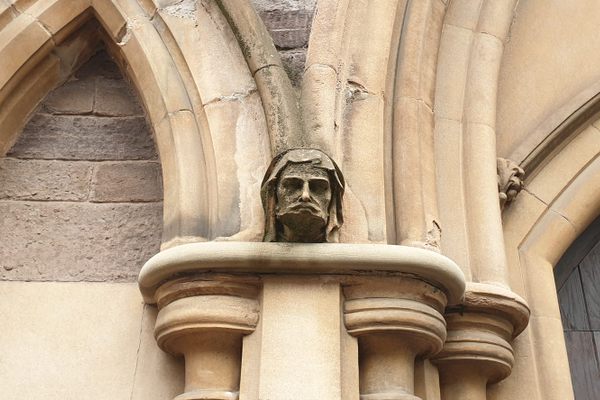Rankin Inlet Inunnguaq
A modern version of the stone cairns built by the Inuit.
Known as ᐃᓄᒃᓱᒃ—or, in English spelling, inuksuk—they are large stone landmarks or cairns, human-made piles of stones, used by the Inuit, Inupiat, Kalaallit, Yupik, and other peoples of the Arctic region of North America.
(Despite the predominant English spelling as “inukshuk,” both the Government of Nunavut and the Government of Canada are promoting the Inuit-preferred spelling “inuksuk.”)
Inuksuk structures are found from Alaska to Greenland. This region, above the Arctic Circle, is dominated by the tundra biome, a barren and largely treeless ecosystem, containing areas with few natural landmarks.
The traditional meaning of the inuksuk is “Someone was here” or “You are on the right path.” The inuksuk may have been used for navigation, as a point of reference, a marker for hunting grounds, as a food cache, or some combination of the above.
Inuksuk vary in shape and size, but all share deep roots in the Inuit culture. Historically, the most common type of inuksuk is a single stone positioned in an upright manner. A structure similar to an inuksuk but meant to represent a human figure, called an inunnguaq (ᐃᓄᙳᐊᖅ, “imitation of a person”), has become widely familiar to non-Inuit. However, it is not the most common type of inuksuk.
Inuksuk continue to serve as an important Inuit cultural symbol. For example, an inuksuk is shown on the flag and coat of arms of the Canadian territory of Nunavut, and the high school in Iqaluit is named Inuksuk High School after the landmarks.
An inunnguaq was the basis of the logo of the 2010 Winter Olympics, designed by Vancouver artist Elena Rivera MacGregor. Although the design has been questioned, people believe it pays tribute to the inuksuk that stands at Vancouver’s English Bay, a contemporary inuksuk created by artisan Alvin Kanak of Rankin Inlet and given as a gift to the city for Expo 86. Friendship and the welcoming of the world are the meanings of both the English Bay structure and the 2010 Winter Olympics emblem.
There are five authentic inuksuk throughout the world which were donated by the government of Canada: in Brisbane, Australia; Monterrey, Mexico; Oslo, Norway; Washington D.C., the United States; and Guatemala City.
The Atlas Obscura Podcast is Back!



















Follow us on Twitter to get the latest on the world's hidden wonders.
Like us on Facebook to get the latest on the world's hidden wonders.
Follow us on Twitter Like us on Facebook